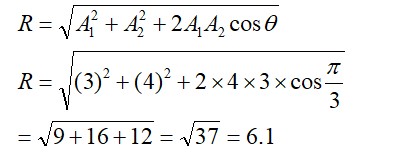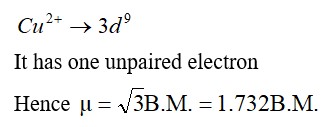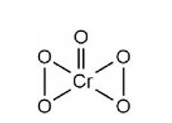8.31 How would you account for the following:
(i) Of the d 4 species, Cr2+ is strongly reducing while manganese(III) is strongly oxidising.
(ii) Cobalt(II) is stable in aqueous solution but in the presence of complexing reagents it is easily oxidised.
(iii) The d 1 configuration is very unstable in ions.
8.31 How would you account for the following:
(i) Of the d 4 species, Cr2+ is strongly reducing while manganese(III) is strongly oxidising.
(ii) Cobalt(II) is stable in aqueous solution but in the presence of complexing reagents it is easily oxidised.
(iii) The d 1 configuration is very unstable in ions.
-
1 Answer
-
8.31 (i) Of the d4 species, Cr2+ is strongly reducing while manganese (III) is strongly oxidizing: The +2 oxidation state becomes more stable on moving across a period i.e. the tendency of metals to give electrons becomes more. Therefore, vanadium(II) oxide and chromium(II) oxide are strong reducing agents.
As if the value of electrode potential is higher i.e. more energy required to withdraw an electron from an isolated atom, more readily it can be reduced and lesser the electrode potential more readily it can be oxidized.
The electrode potential of Cr3+? Cr2+is negative so it acts reducing agent or can undergo oxidation which makes it
...more
Similar Questions for you
K2Cr2O7 + H2O2 + H2SO4->
Potassium permanganate in alkaline medium oxidise lodide to lodate.
Compound A is
KMnO4 decomposes upon heating at 513 K and forms K2MnO4 and MnO2.
2KMnO4
Taking an Exam? Selecting a College?
Get authentic answers from experts, students and alumni that you won't find anywhere else
Sign Up on ShikshaOn Shiksha, get access to
- 65k Colleges
- 1.2k Exams
- 679k Reviews
- 1800k Answers




